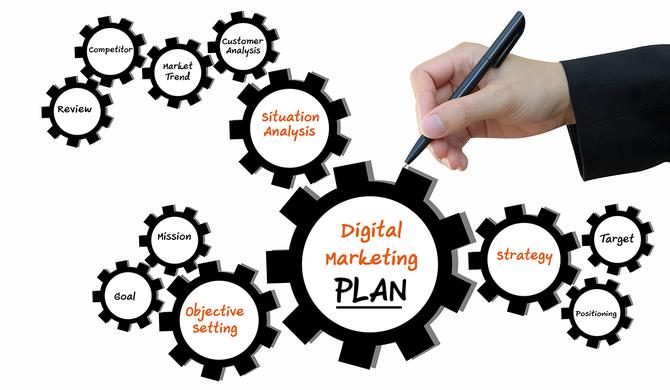One quarter of all high-tech chief marketing officers will be replaced annually between now and 2018, IDC has claimed in its Worldwide CMO/Customer Experience 2015 Predictions.
The analyst firm released 10 key predictions for the new year based on long-term industry trends and themes on the horizon as part of its IDC FutureScape report. As well as its forecast that 25 per cent of CMOs across the IT and technology industry will be replaced every year for the next four years, IDC also expects one-quarter of CMOs and CIOs to have a shared roadmap for marketing technology for 2018.
Other predictions also reflected the data-driven nature of modern marketing, as well as the need for marketers to look holistically at customer engagement. For example, IDC forecast 15 per cent of B2B companies will be using more than 20 data sources to personalise a high-value customer journey.
In addition, the analyst group believes one in three marketing organisations will be delivering compelling content to all stages of the buyer journey.
“CMOs must overcome the gravitational pull from the past, now,” said Kathleen Schaub, vice-president with IDC’s CMO Advisory Service.
“The tools of disruption, such as cloud-based marketing technology, predictive analytics, content marketing and social media, are marching towards mainstream.
“IDC is confident these 10 decision imperatives pinpoint the nerve centre of the marketing disruption. They represent opportunities for CMOs who are willing to step up to the next stage of leadership. Right focus will ensure that all the hard work will result in true transformation and not just turmoil.”
Related: Forbes: CMOs are the new transformers of business
In a webinar discussing the results, IDC explained the FutureScape aimed to identify factors driving marketing transformation externally, as well as how these will impact marketing practices and organisations. It is also designed to help marketers prioritise steps they should take to keep up.
“Organisations are shaped by the external systems in which they exist. Marketing organisations must therefore not only be adaptive to the changes happening in their own companies, but also understand the extenuating circumstances that the enterprise finds itself,” Schaub said in the webinar.
To do this, IDC identify eight key external drivers having the greatest impact on marketing in the next four years. These included increased pressure on CMOs to perform from their CEO and executive peers as well as the bottom up in the organisation; along with marketing technology adoption enhancing competitiveness.
“In our annual CMO ROI matrix in 2014, we saw leading companies outspending laggard companies by a staggering 1300 per cent on marketing technology,” Schaub said. “So any company that believes it can do without technology is delusional.”
Read more: Report: Customer engagement hindered by poor marketing tech integration
With consumers, the mobile/social lifestyle has become ubiquitous, although marketers are still coming to terms with this, she continued. Buyers are also hyper-informed today with higher expectations, putting further pressure on marketers to better understand customers.
IDC’s fifth driver was the explosion of digital channels used by consumers. “We don’t see any end in sight,” Schaub said. “We now track 48 different kinds of interaction through technology and this will only get more intense in the next few years.”
The availability of big data is also disrupting relationships and business models, while allowing marketers to zoom into groups of buyers, as well as individuals, to find opportunities.
“Competitive advantage is now hinged on a company’s ability to master big data,” Schaub said.
At the same time, marketing technology infrastructure is maturing and emerging from the “era of point solutions to platforms that hold the promise of delivering a functionally comprehensive and operationally well integrated system for operating and optimising marketing performance overall”, she said.
IDC expects marketing technology spend to grow to US$32 billion by 2018.
The final driver on IDC’s list was the lasting impact of the recession globally, which continues to throw a shadow six years on and sees many organisations still focused on cost and lean operations.
“Marketing leadership can no longer just be a keeper of the brand - it must now be a business manager,” Schaub added.
IDC’s full list of predictions is as follows:
- 25 per cent of high-tech CMOs will be replaced every year through 2018.
- By 2017, 25 per cent of marketing organisations will solve critical skill gaps by deploying centres of excellence.
- By 2017, 15 per cent of B2B companies will use more than 20 data sources to personalise a high-value customer journey.
- By 2018, one in three marketing organisations will deliver compelling content to all stages of the buyer’s journey.
- In 2015, only one in five companies will retool to reach line-of-business buyers and outperform those selling exclusively to IT.
- By 2016, 50 per cent of large high-tech marketing organisations will create in-house agencies
- By 2018, 20 per cent of B2B sales teams will go ‘virtual’, resulting in improved pipeline conversion rates.
- By 2017, 70 per cent of B2B mobile customer apps will fail to achieve ROI because they lack customer value-add.
- By 2018, 25 per cent of CMOs and CIOs will have a shared roadmap for marketing technology.
- By 2018, 20 per cent of B2B CMOs will drive budget increases by attributing campaign results to revenue performance.
Follow CMO on Twitter: @CMOAustralia, take part in the CMO Australia conversation on LinkedIn: CMO Australia, join us on Facebook: https://www.facebook.com/CMOAustralia, or check us out on Google+: google.com/+CmoAu
Signup to CMO’s email newsletter to receive your weekly dose of targeted content for the modern marketing chief.












